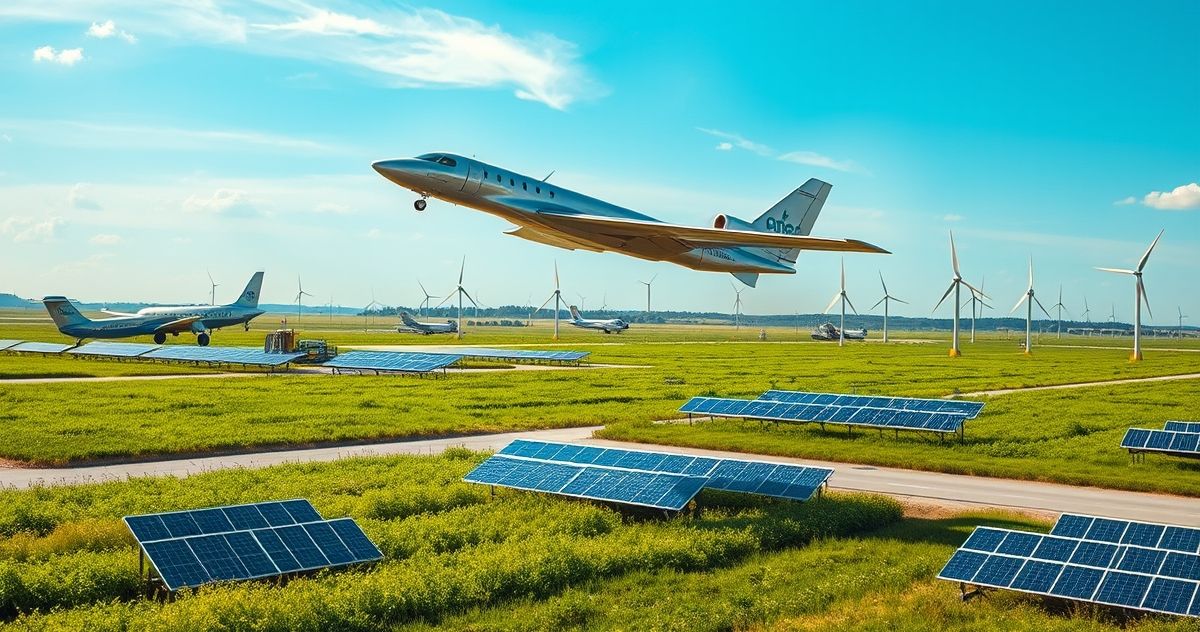Electric Aviation Development Credit
The Electric Aviation Development Credit is an innovative tax incentive aimed at fostering advancements in the rapidly emerging sector of electric aviation. This tax credit is designed as part of a broader strategy to encourage the reduction of carbon emissions in air travel and promote the development of sustainable and environmentally friendly aviation technologies. As the aviation industry faces increasing pressure to reduce its carbon footprint, this credit plays a crucial role in aligning financial incentives with environmental goals.
What It Is and Its Primary Purpose
The primary purpose of the Electric Aviation Development Credit is to incentivize companies to invest in technologies that advance the electric aviation industry. This encompasses a wide range of activities, from research and development initiatives to the production and deployment of electric aircraft and related infrastructure.
By offering a tax credit, the government encourages private sector investment in a sector that is crucial for meeting global climate targets. This is particularly important as countries worldwide commit to reducing carbon emissions and moving towards greener energy solutions.
Key Features or Components
- Eligibility: Typically, businesses involved in the design, manufacturing, and deployment of electric aviation technologies are eligible. This includes companies that are developing batteries, electric propulsion systems, or entire electric aircraft.
- Credit Value: The tax credit amount may vary based on the scale of the investment and the nature of the projects involved. Factors such as innovation level, expected environmental impact, and potential for commercialization can influence the credit’s value.
- Claim Process: Businesses must document their expenditures related to electric aviation development. Detailed records are crucial for validating claims and ensuring alignment with the credit’s objectives.
- Carryforward and Carryback Provisions: To maximize the incentive’s benefits, businesses may be allowed to carry forward unused credits to future tax years or apply them to past tax liabilities, subject to specific regulations.
Relevant Filing or Compliance Requirements
To benefit from the Electric Aviation Development Credit, businesses must adhere to several compliance requirements. These typically include:
- Documentation: Comprehensive documentation of all project expenses, research activities, and project milestones. This data is vital for audit purposes and helps illustrate the project’s alignment with credit criteria.
- Certification Requirements: Some jurisdictions may require projects to meet specific certification standards or criteria set by industry regulatory bodies to qualify for the credit.
- Annual Filing: Businesses usually report their eligibility and claimed credit amount annually on their tax returns. This ensures ongoing compliance and allows tax authorities to assess the credit’s impact.
Penalties or Consequences for Non-Compliance
Non-compliance with the requirements of the Electric Aviation Development Credit can lead to penalties that might include:
- Repayment of Credit: If a company is found to have improperly claimed the credit, it may be required to repay the incentive along with potential interest.
- Fines: Companies could face financial penalties for misreporting or failing to comply with proper documentation and reporting standards.
- Loss of Eligibility: Continued non-compliance might make a company ineligible for future credits or incentives, hampering their financial planning and strategic growth efforts.
Importance or Significance in Tax Resolution and Financial Compliance
The Electric Aviation Development Credit is a pivotal element in the strategy of aligning economic incentives with sustainable innovation. It not only facilitates the growth of an essential industry but also encourages companies to adopt sustainable practices and technologies.
This credit is crucial for tax compliance as it requires rigorous documentation and adherence to regulatory standards. Moreover, it supports the aviation sector in transitioning towards sustainability, addressing global environmental concerns, and achieving predefined climate targets.
By leveraging this tax incentive, companies can significantly reduce their tax liabilities, reallocate resources to further innovation, and contribute to the global movement towards cleaner aviation solutions. This not only benefits individual companies but also has a macroeconomic impact by reducing national carbon footprints and stimulating progress in sustainable transportation technologies.
In conclusion, the Electric Aviation Development Credit is more than just a financial incentive; it is a testament to the significant role taxation policies play in shaping industry practices and supporting essential technological advancements in critical sectors such as aviation.


 Chinese (Simplified)
Chinese (Simplified) English
English Spanish
Spanish